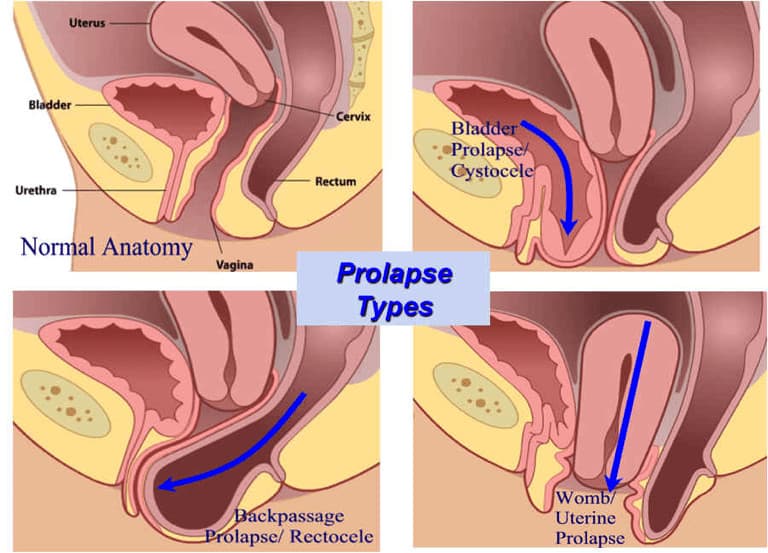Recognizing Prolapse Symptoms After Childbirth
Hello super moms and dads out there! ? Giving birth is a beautiful journey, but sometimes it comes with a few bumpy roads during postpartum recovery. Have you heard about prolapse after birth? Let’s share some sunshine and wisdom on this topic, so all you amazing parents can spot the symptoms early and get the support you need. ?
What is Postpartum Prolapse?
Prolapse occurs when the muscles and ligaments supporting a woman’s pelvic organs weaken. This can cause one or more of the pelvic organs to drop (or prolapse) from their normal position. After giving birth, it’s not uncommon to experience some form of prolapse, with the most common being uterine, bladder, or rectal prolapse.
Common Symptoms of Prolapse After Birth
- A feeling of fullness or pressure in the pelvic area: It’s likened to a sensation of sitting on a small ball or having something falling out of your vagina.
- Visible bulge in the vagina: You might actually see or feel a bulge, indicating one of the organs is prolapsing.
- Difficulty with urination or bowel movements: Problems starting to pee, a feeling of incomplete bladder emptying, or constipation can be associated with prolapse.
- Discomfort or pain during intercourse: Due to the shifting of organs, some women experience discomfort during sex postpartum.
- Lower back pain: Pains that can’t be explained by other postpartum changes can sometimes be a symptom of prolapse.
Tips for Postpartum Prolapse Management
Discovering the signs early is part of a sunny solution! If you notice any symptoms, it’s important to consult with your healthcare provider. They may refer you to a pelvic floor therapist – a real-life superhero for your recovery journey. ? While waiting for your appointment, here are some tips to manage symptoms and aid your recovery:
- Perform Gentle Pelvic Floor Exercises: Just like a gentle morning stretch, some basic pelvic floor exercises (with your doctor’s approval) can help strengthen those muscles.
- Mind Your Posture: Standing and sitting straight is like planting seeds for a stronger pelvic floor. Good posture can go a long way in supporting your recovery.
- Watch Your Weight: A few extra pounds can be like rain on your parade. Keeping your weight in check can decrease the pressure on your pelvic floor.
- Stay Hydrated and Eat High-Fiber Foods: Like sunlight to plants, water and fiber can help ease constipation, which is essential in avoiding extra strain.
Let’s not forget about the emotional aspect – it’s as important as physical care! Stay connected to loved ones, join supportive mom groups, and remember, it’s totally ok to ask for help. After all, it takes a village to raise a baby, and sometimes, to take care of a village queen: You! ?
Alright, let’s wrap this sunny packet of knowledge for now. Keep your spirits high, and remember, you’re doing an amazing job. In the next section, we’ll dive into preventative measures, treatment options, and heartfelt stories from other mothers who’ve walked the same path. Your wellness journey is just beginning, and we’ll be right here to guide you every step of the way. Keep shining, superheroes! ?

5 Essential Preparations for Prolapse Post-Birth
As parents, getting ready to welcome your bundle of joy, it’s not just the nursery you should be preparing. Here are five proactive steps to help you brace for possible prolapse symptoms after delivery. ??
1. Educate Yourself Beforehand
Knowledge is like having a treasure map while navigating motherhood’s waters. Understanding what pelvic organ prolapse is, its risk factors, and symptoms equips you for early detection and management. ? Read up, attend prenatal classes, and don’t shy away from discussing this with your healthcare provider.
2. Arrange for a Pelvic Floor Assessment
Just like a stroller safety check before the big day, scheduling a pelvic floor assessment is a smart move. It’ll serve as a baseline to help you and your healthcare provider detect changes more effectively postpartum. ?
3. Plan for Postpartum Support
Post-delivery, you’ll need time to heal and care for your baby. It’s okay to enlist help – whether it’s meal prep, housekeeping, or someone to watch over you and your newborn. Build your support system like a cozy nest, ready for the arrival of your little one. ?
4. Prep Your Postpartum Care Kit
Create a care package just for you, including items for your comfort and recovery. Think support garments, cushions for comfortable seating, and resources for pelvic floor exercises. It’s like packing the ultimate “feel-good” toolkit. ?
5. Mental Health Matters
Take care of your mental wellbeing by connecting with moms who have been through similar experiences. Join support groups, or just chat with a friend who gets it. A happy mind paves the way for a smoother recovery journey. ????
Embrace these preparations not as a sign of trouble ahead but as the empowering steps of an incredible parent. Here’s to a journey filled with health, happiness, and high spirits! ??
See more great Things to Do with Kids in New Zealand here. For more information see here
Disclaimer
The articles available via our website provide general information only and we strongly urge readers to exercise caution and conduct their own thorough research and fact-checking. The information presented should not be taken as absolute truth, and, to the maximum extent permitted by law, we will not be held liable for any inaccuracies or errors in the content. It is essential for individuals to independently verify and validate the information before making any decisions or taking any actions based on the articles.




